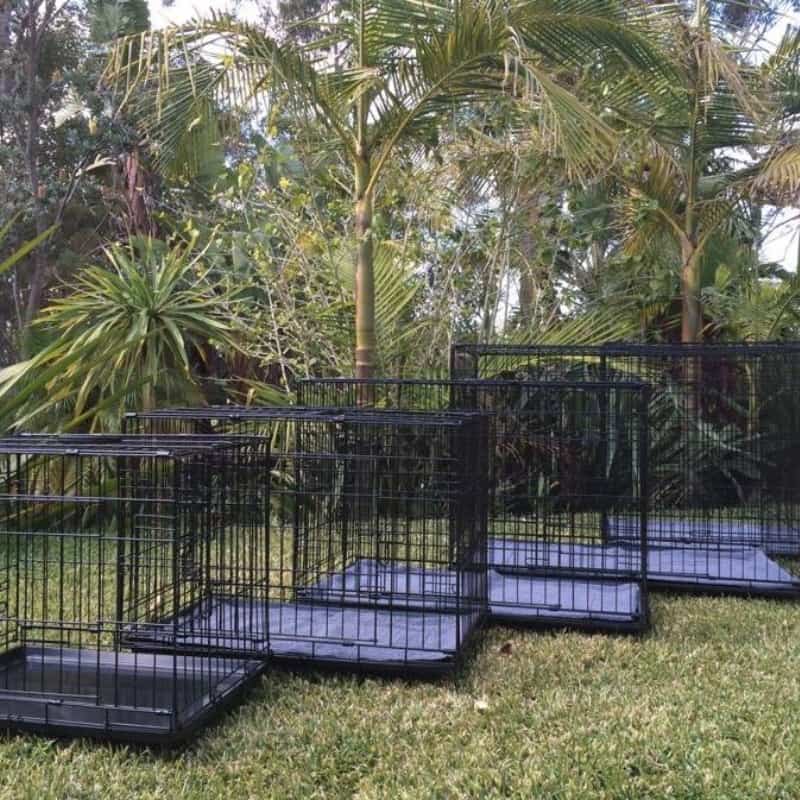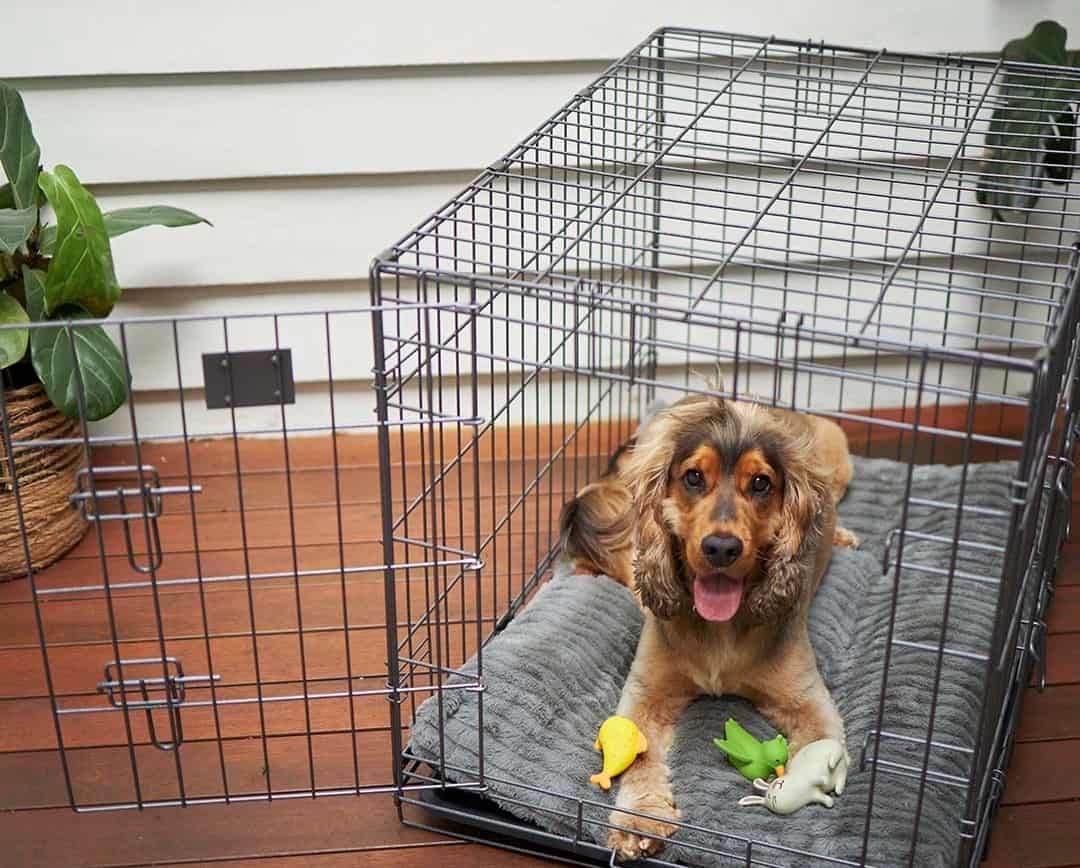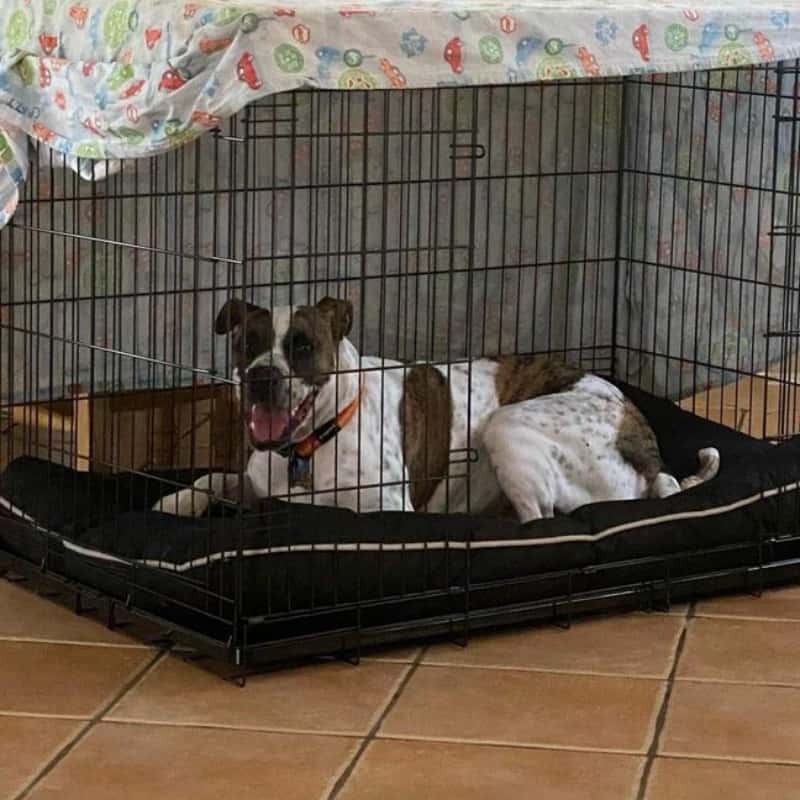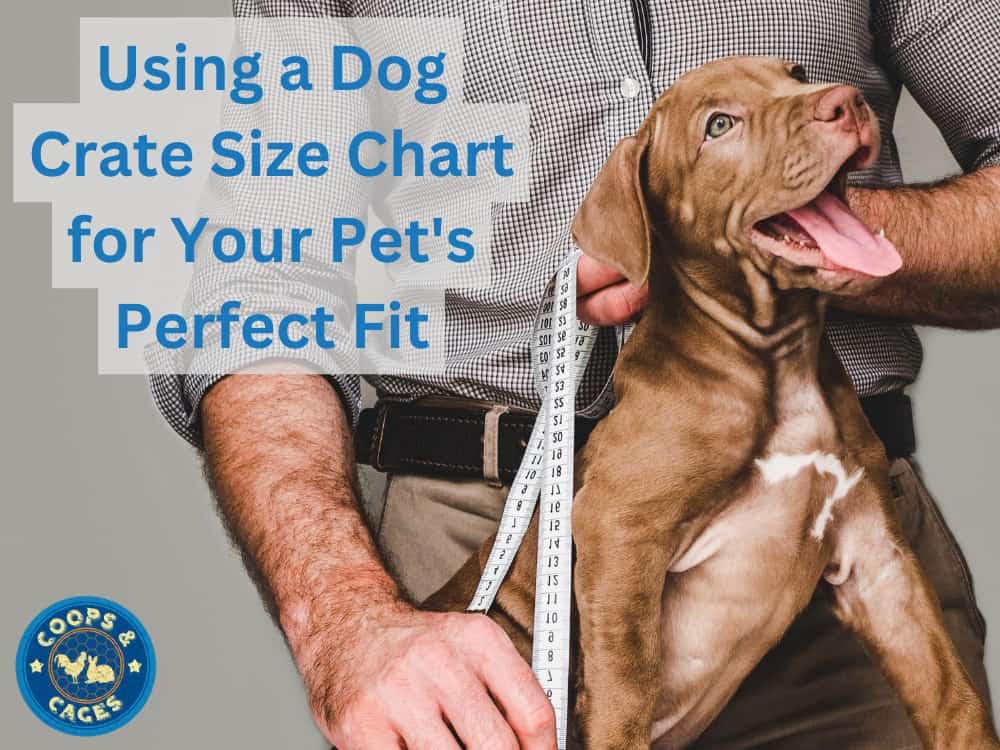Dogs, How To Do Things, Training
Using a Dog Crate Size Chart for Your Pet’s Perfect Fit
As devoted pet parents, it’s vital to provide our canine companions with a safe and cosy space they can retreat to when needed. A well-fitted dog crate serves as their den, offering a sense of security and comfort.
To help you make the right choice, we’ll delve into the significance of using a dog crate size chart, the step-by-step process of measuring your furry friend accurately, and essential tips to select the ideal crate that meets your pet’s unique requirements.
Let’s embark on this journey to find out all about using a dog crate size chart for your pet’s perfect fit!
Choosing the Right Type of Crate
There are several types of crates to choose from, including wire crates, plastic crates, and soft-sided crates. Consider your dog’s needs and preferences when selecting the type of crate.
Wire crates provide good ventilation and visibility, while plastic crates offer more privacy and security. Soft-sided crates are lightweight and portable, making them ideal for travel.
For strong, or larger dog breeds, heavy duty wire crates are ideal. Constructed with strong and thick wire materials, reinforced corners and latches, these crates are designed for strong and determined dogs.
When selecting a crate, take into account your dog’s breed, size, and whether they are fully grown yet.

How To Measure Your Dog for a Crate
When it comes to selecting the correct size crate, accurate measurements of your dog are crucial:
Step 1: To measure your dog’s length, place them in a standing position and measure from the tip of their nose to the base of their tail using a measuring tape. Keep the measuring tape straight along their body for accurate results.
Step 2: To measure your dog’s height, have them stand up straight on a level surface. Measure starting from the floor up to the highest point of their shoulders or the top of their head- whichever is highest.
By adding an extra 5-10cms to these measurements, you can ensure their crate isn’t too small or too large.
Understanding Dog Crate Sizes
Dog crates are commonly categorised as small, medium, large, or extra-large. However, it’s crucial to check the dimensions provided instead of assuming that the breed corresponds precisely to the manufacturer’s sizing guide.
Using a Dog Crate Size Chart
Using a dog crate size chart is a valuable approach when selecting the right crate for your furry companion. These charts typically provide breed-specific or size-based guidelines to ensure a proper fit.
If you have a mixed breed dog, compare your dog’s measurements to those of similar dogs listed on the chart.
By measuring your dog and cross-referencing the dimensions provided on the chart, you can determine the correct size that allows them to stand, turn around, and lie down comfortably.
Choose Your Size
Somerzby Dog Crates come in 5 different sizes:
| Size | Length | Width | Height |
| Small 24” Crate | 60cm | 44cm | 51cm |
| Medium 30” Crate | 76cm | 47cm | 57cm |
| Large 36” Crate | 92cm | 58cm | 65cm |
| XL 42” Crate | 106cm | 70cm | 78cm |
| XXL 48” Crate | 122cm | 75cm | 83cm |
Which Crate Size For My Dog?
The following crate sizes are usually recommended for these breeds. It is important to still measure your dog before determining the appropriate crate as each individual dog is different.
- Small 24 Inch Crate – Chihuahua, Toy Poodle, Yorkshire Terrier.
- Medium 30 Inch Crate – French Bulldog, Maltese Terrier, Jack Russell.
- Large 36 Inch Crate – Beagle, Cavalier King Charles Spaniel, Cocker Spaniel.
- XL 42 Inch Crate – Border Collie, Siberian Husky, Labrador.
- XXL 48 Inch Crate – Bullmastiff, German Shepherd, Boxer.
Benefits of Having the Right Size Crate
The right crate size for your dog brings numerous benefits.
Crate Training:
Having a correctly sized crate is essential when crate training your dog as it ensures their comfort and acceptance of the crate as a safe and cozy space.
House Training
A properly sized crate is crucial for house training your dog as it encourages them to hold their bladder and bowels until you can take them outside.
Dogs instinctively avoid soiling their sleeping area, making the crate a valuable tool during house training.

Safe Travel:
During car trips, a properly sized crate keeps your dog secure, preventing any potential injuries that may occur from sudden stops or movements.
It also reduces travel-related stress and provides a familiar space for your dog.
FAQs in Relation to Dog Crate Size Chart
How Do I Know What Crate Size To Get For My Dog?
You can determine the right crate size by measuring your dog’s length and height, add an extra 5-10cms, then refer to a reliable dog crate size chart.
Should I Buy A Crate Based On My Dog’s Current Size Or Adult Size?
It is recommended to buy a crate based on your dog’s size fully grown rather than their current size.
This ensures that the crate remains suitable as your puppy grows and your dog won’t require frequent crate replacements.
How Much Room Does A Dog Need In A Crate?
Your dog’s crate should allow them enough space to stand up, turn around and lie down comfortably without being cramped.
The ideal size is their length and height plus approximately 10cm.
How Do I Know If My Dog Crate Is Too Small?
If your pooch cannot stand upright or turn around easily, it suggests that the cage might be too small.

Jordan’s Wrap
People often ask me which crate size is best for their dog. Choosing the right dog crate size is a vital part of pet ownership. A good fit ensures comfort, safety, and security for your furry friend.
Measuring your dog accurately can make all the difference in finding that perfect crate. The use of a dog crate size chart simplifies this process, helping you find what’s best for your pet quickly and easily.
In the end, it’s all about ensuring our pets are comfortable and happy. With Coops and Cage’s range of high-quality enclosures designed with animal health and happiness at heart.



